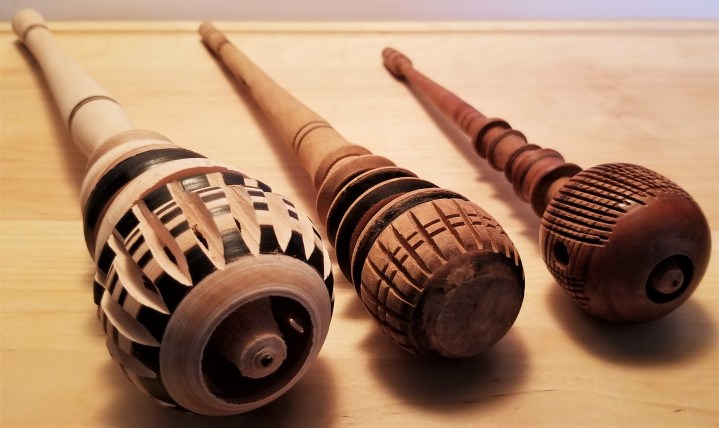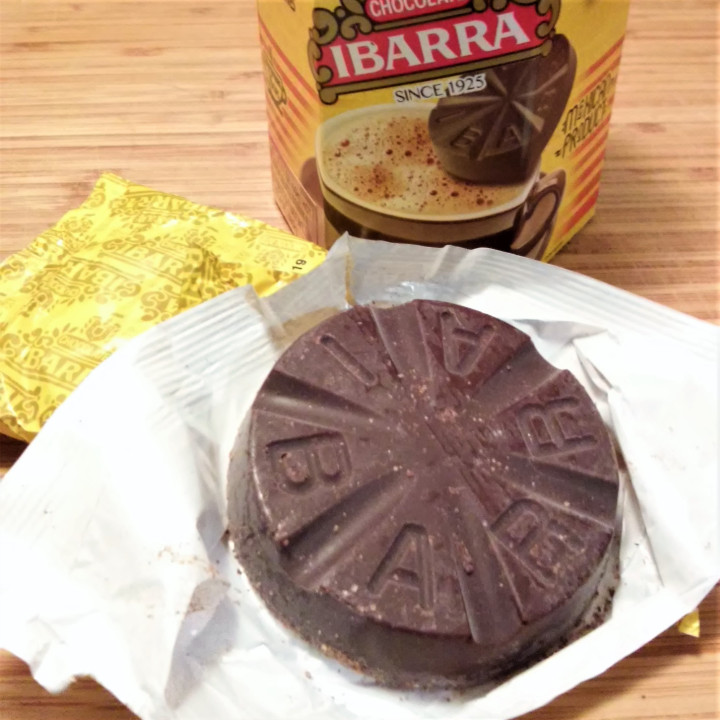
Although archaeological evidence of the oldest wild cacao trees (Theobroma cacao) and their earliest domestication may be traced to South America, formal cultivation began with the Olmec and Maya civilizations in Southern Mexico; they took care of the plants, and processed the beans from the pods to prepare a water-based beverage, often with additions of ground maize, vanilla, annatto or chile, consumed mainly for ceremonial purposes. Later on, the Mexica (Aztec) took control and imposed tariffs that were often paid in cacao beans, which became established as currency. During colonial times, the Spaniards introduced the beverage as chocolate to Europe and the Philippines, first as originally seasoned, and later, further modified with the addition of sugar, and often, milk and cinnamon; from there, chocolate and vanilla became separate ingredients in sweet confections. Nowadays, the top producers of cocoa and chocolate products worldwide are in Africa and South Asia; Mexico is actively trying to achieve a spot as top producer, while observing sustainable and humane practices, with crops cultivated mainly in the states of Chiapas and Tabasco, and smaller harvests from Oaxaca, Guerrero and Veracruz.
Since pre-Hispanic times, people in Southern Mexico have known to clear the brush around cacao trees, and prune them, for healthier crops and higher yields; “ramas mamonas y ladronas” (“suckers and water sprouts”, which are strong low or inner branches) are cut so they do not “steal” energy away from the main trunk and pod development. To this day, farmers still clean and use these ladronas trimmings as rudimentary tools to stir cocoa beans while roasting, and to beat hot chocolate to make it foamy; I wonder if this might have been the origin of the kitchen tool specifically designed to froth hot chocolate and other hot beverages, called molinillo (small mill). Molinillos are also made of wood, carved on a lathe (rotating machine) to produce flaps and rings; in the photo at the top of this post, three examples of molinillos. It is remarkable how each molinillo is handcrafted from a single piece of wood, even the lose rings, as it may be appreciated in the photos below:


About two years ago, I wrote about the history of Mexican hot chocolate, and shared my recipe, as shown below. I did not have a Mexican molinillo then, so I used an immersion blender. I finally bought a molinillo during a trip to Mexico in 2019, and I also have a battery-operated frother*.
Mexican Hot Chocolate – Chocolate
Printable recipe: Mexican Hot Chocolate
Ingredients (amounts for 16 fl. Oz – 500 ml – 2 cups)
2 2/3 oz (approximately 80 g) Mexican chocolate
1 cup water
1 cup hot milk (or hot water)
Optional add-ins: cinnamon, vanilla extract, annatto powder, etc.
The most traditional choice would be to use chocolate tablets made with pure cacao paste and sugar**. I had two kinds of Mexican chocolate: Ibarra™ tablets (photo below, left) and Punta del Cielo™ prepared powder (photo below, right):


It is important to check the ingredient list of products, and follow the trail of possible effects on flavour, nutrition, or health. Ibarra™ brand tablets now include lecithin and artificial flavourings; the artificial flavourings are an unfortunate addition, but the lecithin is just a fat emulsifier and not necessarily unhealthy. This brand is very popular, inexpensive, and probably what may be found more easily, especially outside Mexico (as well as Abuelita™). On the other hand, the Punta del Cielo™ powder contains less processed ingredients, but includes powdered milk; again, not necessarily a bad thing, just that it might change the flavour and, of course, it is not a vegan-friendly product. I decided to use the tablets for this post.
Bring the first cup of water to a rolling boil, then add chocolate (photo below, left). Stir until vigorously boiling again (there is even an expression in Mexico, “como agua para chocolate”– “like water for chocolate” when someone is so mad they feel hot and “steaming with anger”); continue until all the chocolate has fully dissolved (photo below, right):
Incorporate the hot milk (or hot water) and add-ins, then beat by transferring into a blender, or by hand with a whisk or a molinillo, until very frothy. I used my recently acquired molinillo (photo below, left), to compare to the previously used immersion blender (centre) and I also tried an electric frother in a mug (right):



All three result in frothy beverages, but somewhat different. Not surprisingly, I found that the hand-propelled molinillo takes the longest, and the vessel I used was too wide at the top, so it was hard to control the spin; using a dedicated “chocolatera” pot or frothing pitcher*, with a narrower opening, would have made the job easier. The immersion blender is the fastest, and produces a very thick, compact foam, that lingers mostly unchanged until the beverage is all consumed. Finally, the electric frother is very convenient, and works great for a single serving (warning: fully immerse the tip in the liquid before turning on, and turn off before removing, to minimize spillage):
Serve immediately in a clay mug (jarrito) or, also very traditional, in a cup with saucer, as shown below:

This comforting beverage, with its frothy top, is a delight to enjoy on a cold winter day, especially with a sweet bite (more on that in my next post).
For your convenience, click on the images below for products available on Amazon™. DISCLAIMER: Any reviews included in this post are my own, for items I have purchased, not provided by any company; as an Amazon Associates Program affiliate, I might receive a commission for any purchases originated from the links below, at no extra cost to you. Thank you to all the readers who have bought products (even some different from the suggested items!) starting with a click from my links.
* Some kitchen tools to make a frothy cup of Mexican hot chocolate:
** As mentioned above, the most traditional Mexican hot chocolate would start with pure cacao paste and sugar; in case of having unsweetened cocoa paste (photo below, left) add sugar, to taste. There are a few companies that make tablets with unrefined cocoa paste, sugar and natural flavourings only, such as Mayordomo™ in Mexico, or Taza™ in the USA (photo below, centre); Abuelita™ tablets are similar to Ibarra™, very popular and affordable (photo below, right):
Many thanks to my dear friend Margaret, for allowing me to photograph the molinillo on the far right at the top of this post, and heirloom from her mother. As a token of my appreciation, I brought her a new molinillo from Mexico, also featured in the photo.

















Now, that looks like a stunning hot chocolate. I love the history of the molinillo and the pictures too very interesting. What’s annatto though if I may ask?. even as a chef I’ve not come across that one.
LikeLiked by 1 person
Ah yes, I will add a link to the word, thank you for asking. It is a bright-orange natural colorant and seasoning extracted from the dried seeds of an evergreen shrub, originally from South America. It is used a lot in Mexican and Filipino cuisines. Please check:
https://mysliceofmexico.ca/2018/12/02/annatto-a-colourful-story/
LikeLiked by 1 person
sounds like a fun ingredient. Thank you so much for the link!
LikeLiked by 1 person
Oooh, have not had hot chocolate for years, that looks lovely.
LikeLiked by 1 person
Thank you, I hope you have a frothy cup soon!
LikeLiked by 1 person
The only places that does a decent cup here are the coffee shops, so it will be post-covid at least. And I normally have a latte when I go, less sugar.
LikeLiked by 1 person
I have a molinillo! It was given to me as a gift. I find, though, that a good, hearty shake in a tightly-sealed container does the trick.
LikeLiked by 1 person
Yeah, frothing with a molinillo is not the easiest technique to master, but it is nevertheless a very interesting gadget.
LikeLike
This sounds delightful! I once enjoyed a spicy hot chocolate at Esalen Institute in Big Sur, California! Thanks, Irene, for bringing back pleasant memories! 🌞
LikeLike
Awesome, Lisa!
LikeLiked by 1 person
Makes me wish for a cup right now. 🙂
LikeLiked by 1 person
😋👍
LikeLiked by 1 person
I’ll have to give this a try – I’ve always grated my chocolate disk first. This seems much easier and I’m all about easy.
LikeLiked by 1 person
We have similar tool in the Philippines and the same chocolate tablet. Ahhh! This reminds of the delicious hot chocolate back there. Thank you for sharing, Irene.
LikeLike
There are so many things that were exchanged through the strong trading route between Mexico and The Philippines during Spanish colonial times; It’s fascinating to think that across the Ocean people enjoy the same frothy cup of hot chocolate!
LikeLiked by 1 person
Hot chocolate surprisingly isn’t that big in Japan, well not that I am aware of anyway. But if people knew this, the details of the molinillo and the craft they would certainly appreciate it more. Its funny to think my kids have never had a hot chocolate. They’ve had cocoa, but not hot chocolate. I must make it for them. Thank you for inspiring me.
LikeLike
Can the Molinillo be used to make other drinks?
LikeLike
I don’t see why not, it’s a manual foamer, so you could get foamy milk for coffee, etc.
LikeLike